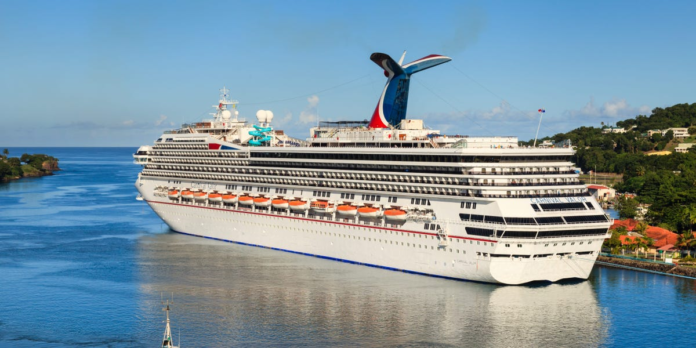A man who spent hours treading water after going overboard a cruise was rescued in a rare success story.
But the chances of going overboard a cruise ship are exceedingly rare, industry data shows.
Reckless behavior, foul play, and intentional acts are almost always the cause.
Top editors give you the stories you want — delivered right to your inbox each weekday. Loading Something is loading. Thanks for signing up! Access your favorite topics in a personalized feed while you’re on the go. download the app Email address By clicking ‘Sign up’, you agree to receive marketing emails from Insider as well as other partner offers and accept our Terms of Service and Privacy Policy
The thrilling survival story of a 28-year-old man who spent almost 20 hours treading water after going overboard from a Carnival cruise ship late last month was the rare maritime rescue to have a happy ending.
James Michael Grimes, who recounted eating bamboo and fighting off jellyfish in the shark-infested waters of the Gulf of Mexico, was the 11th person suspected of going overboard from a cruise ship so far this year, according to data compiled by Ross Klein, a social work professor at Memorial University of Newfoundland, who runs a cruise safety website.
But despite the headline-grabbing tales of murky seas and foul play, overboard incidents remain a real rarity on cruise ships, according to industry data and experts.
A spokesperson for Carnival told Insider last week that the “only way” to go overboard is to “purposefully climb up and over the safety barriers.”
The statistical chances of going into the water are slim — and are even slimmer when passengers keep their wits about them, experts have said.
“The vast majority of cases are either reckless behavior or some form of intentional act, Brian Salerno, the senior vice president for Maritime policy at Cruise Lines International Association, also known as CLIA, told The New York Times. “People don’t just inadvertently fall over the side of a ship.”
In 2019, the last full year of pre-Covid data, 25 people went overboard according to a 2020 CLIA report. That number includes both passengers and crew members.
Compared to the more than 13.7 million passengers who boarded a cruise that same year, the likelihood of going overboard clocks in at less than 0.000001%.
Investigations into every overboard incident from the 10-year period beginning in 2009 found all of them to be “the result of an intentional or reckless act,” the CLIA report said.
The organization recorded a total of 212 overboard incidents on cruise ships from 2009 to 2019. But of those hundreds who went into the water, only 48 were successfully rescued.
Significant safety measures are in place on all cruise ships
The low survival rate among those who end up in the water is why cruise ships heavily prioritize making sure people don’t fall in the first place.
“Cruise ships today are the safest that ever sailed, thanks to the rules, regulations, and technological innovations that govern their design,” Andy Harmer, UK and Ireland director of CLIA, told The Telegraph.
Several safety regulations including uniform minimum railing and balcony heights, as well as structural barriers are in place on all commercial cruises to keep people on the ship, Sarah Kennedy, a spokesperson for CLIA, told The Points Guy in 2018.
Railings on cruise ships are legally required to be 42 inches tall, Klein told The Times. That 3.5-foot height requirement is in place to keep people safe along the promenades onboard, Salerno told the newspaper.
Advancements in sophisticated safety designs mean overboard incidents are generally on the decline, CLIA data shows. “It’s becoming much more uncommon than it was 20 years ago,” Carolyn Spencer Brown, chief content officer at Cruise Media, told The Times in 2021.
Grimes, the 28-year-old passenger who was rescued over Thanksgiving, told Good Morning America last week that his memories around the tumble are hazy. He acknowledged having a few drinks the night he went overboard but said he wasn’t drunk. He did not respond to Insider’s requests for comment.
Alcohol is a common factor in overboard incidents, Klein told The Times, especially when cruise ships peddle week-long drink packages that can incite passengers to over-imbibe. Klein estimated that alcohol is present in at least 11 percent of falls from cruise ships.
Other types of reckless behavior — like climbing on or over the railings; attempting to recreate a certain famous movie scene; or striving to get the perfect selfie — can also quickly turn deadly on a cruise.
Incidents of foul play and the possibility of a purposeful push can contribute to overboard incidents, as well. They are also often, tragically, the result of suicides in which people purposefully jump, experts have said.
But Grimes, who said he came to in the water after losing consciousness, never once thought about giving up during the countless hours he spent treading water.
“I was never accepting that this is it — this is going to be the end of my life,” he said.




